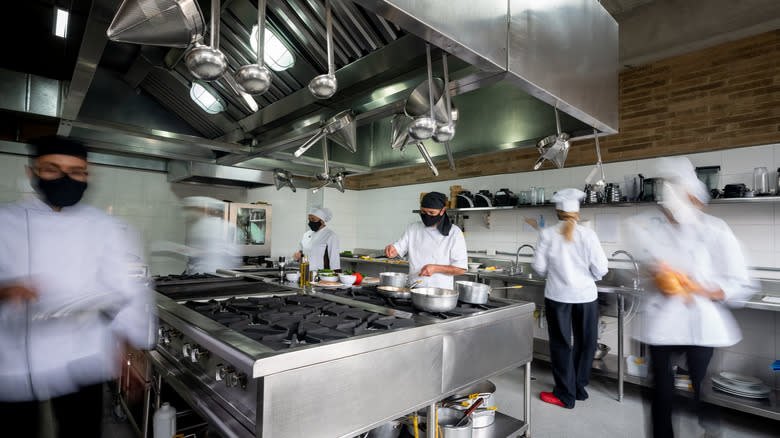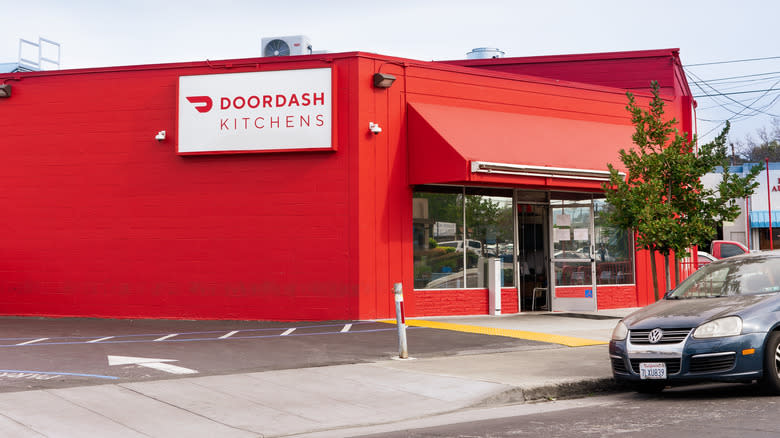Here's How To Tell If You're Ordering Food From A Ghost Kitchen

If you've scrolled through a delivery app lately, you've probably encountered dozens of restaurants that you've never heard of before — but if you google the names for more information, you'll come up empty. These restaurants are likely ghost kitchens, also known as dark kitchens or virtual restaurants, which are delivery-only establishments operating through third-party delivery apps. They make up 41% of independent operations on Grubhub, according to the company's data, and they're common on other popular delivery apps, too. Before you place an order, it's helpful to get a better idea of what ghost kitchens are — and how to figure out whether or not you're ordering from one.
If you're ordering from Doordash, just check for a banner identifying virtual brands. The app even features a "learn more" page that gives customers a rundown of the business model. Other apps, like Uber Eats and Grubhub, do not differentiate ghost kitchens. Fortunately, it's usually pretty easy to identify ghost kitchens: Just look them up. If the restaurant has an actual storefront, a quick Google search will likely reveal photos, reviews, and driving directions. Many ghost restaurants have a limited online presence aside from listings on delivery apps.
Check the descriptions on delivery apps carefully. Restaurants owned by larger chains often include information about their parent company in fine print. Listings should give you an address, too, which you can find for yourself on Google Maps.
You may be wondering why all this snooping is worthwhile. While often a source of delicious food, there is some notable controversy around the rise of this business model.
Read more: 25 Most Popular Snacks In America Ranked Worst To Best
Why Are Ghost Kitchens Controversial?

Often owned by corporations intent on maximizing profit, ghost kitchens have been criticized for poor working conditions and a lack of transparency surrounding health and safety. Ghost kitchens still have to abide by the same regulations as standard restaurants, but it's easier for them to fly under regulators' radar — and harder for customers to access health inspection information.
Some companies, like Cloud Kitchen, rent out facilities where dozens of ghost kitchens share space and operate under one roof. When these shared kitchens open in neighborhoods, the daily swarms of delivery drivers can negatively impact local communities and make the streets impossible to navigate. At one San Francisco location, neighborhood residents reported dangerous traffic conditions and verbal abuse from angry drivers, while small business owners complained that blocked streets drove away customers. When residents complained to Cloud Kitchen, the company stopped responding to their emails.
Despite concerns, some entrepreneurs and small restaurant owners argue that ghost kitchens can serve as a great way to reach customers and break into the restaurant business. In some cases, small businesses that start as ghost kitchens can grow into full-fledged restaurants. In New York City, where restaurants cost millions to open, budding restaurateurs can start a ghost kitchen with just $20,000.
And, if a ghost kitchen looks appealing, don't let the specter scare you off — you could be missing out on a good meal and a chance to help a young restaurant grow.
Read the original article on Tasting Table.

